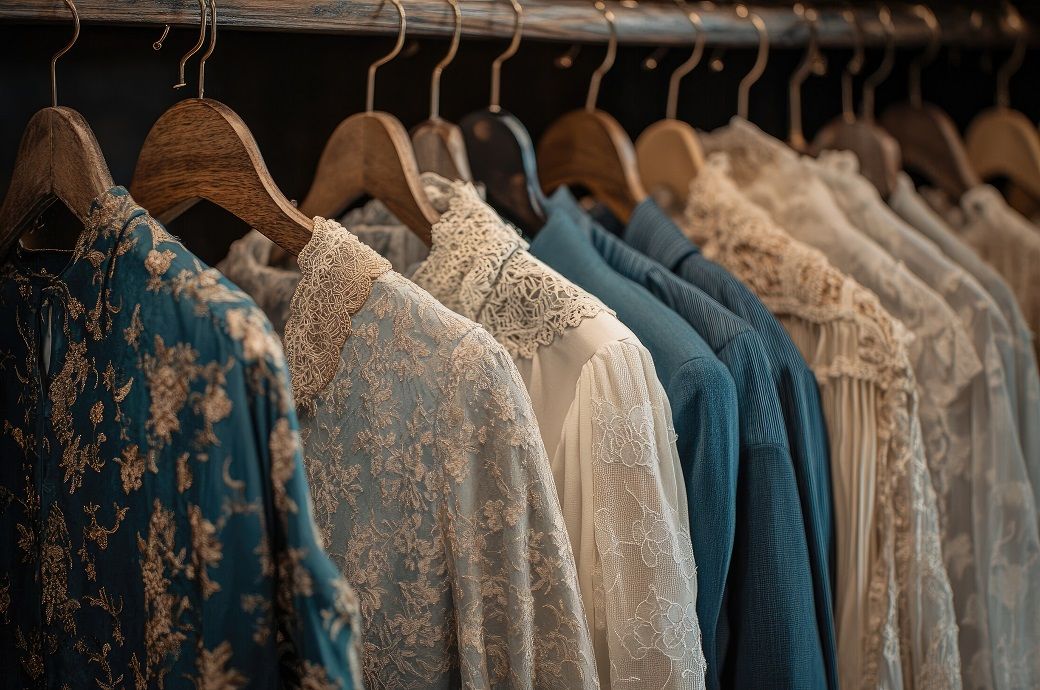Travel
I Spent a Month in France for Less Than $650 — Here’s How I Did It
:max_bytes(150000):strip_icc()/TAL-header-village-vineyard-france-1MTHINFRNC0824-69b32a804918461fa6e397b7ae27535f.jpg)
The bottles glowed like lava lamps between the vines. Vin de France — French table wine, made from the very grapes we’d spent the morning picking. Two dozen of us sat around a folding table at the base of a sloping vineyard in Alsace, where dirt-crusted hands passed around hunks of fresh bread and the conversation danced between French and English.
Tu veux more, ma chérie? asked Jeanne, offering to refill my glass from one of the label-less bottles of Si Rose — a $17 pour by New York standards. I’d bought this same wine, a skin-contact blend of gewürztraminer and pinot gris, precisely three days earlier at a wine bar in Brooklyn, where it cost $85. Here, we polished off half a dozen bottles pulled straight from the cellar during our lunch break.
I’d like to tell you it tasted better because it was free, but in truth, what wine wouldn’t taste better in a sun-drenched vineyard? Rather, I enjoyed it more because I could afford to be less precious — I could sip it without stressing over the cost.
Sophie Dodd/Travel + Leisure
While most of the people around me were being paid, a few of us were bénévole, or volunteers — we’d signed WWOOF (World Wide Opportunities on Organic Farms) contracts, committing to three weeks of helping with wine harvest in exchange for food and housing with pioneering natural winemaker Christian Binner. Rather than shell out thousands of dollars for another certification course, this was a hands-on chance to deepen my wine education — and spend nearly a month abroad — without bankrupting myself.
Wine harvest is at turns indulgent, exhausting, romantic, and humbling. You wake with the sun, grab a coffee and your secateur (shears), pile into cars, and pair off in the vines, clipping grapes and plunking them into buckets as you go. You sweat, tell secrets, sing Serge Gainsbourg to pass the time. In the afternoons, you lower yourself into a vat of fermenting grapes, squishing them down with your bare feet. You take turns cooking for each other in the evenings, making pasta and pissaladière as you practice your French. Work, drink, sleep, repeat. It’s far from a vacation — more like a labor-intensive summer camp, a grueling getaway of sorts that’s become the annual highlight of my year.
Sophie Dodd/Travel + Leisure
If you’re curious about work exchanges, here’s how I organized mine, and how it allowed me to spend less than $700 while staying on a picturesque vineyard in France for a month.
I reached out to the winemaker via their U.S. importer — but have previously used sites like Workaway and WWOOF.
Cost: $32
While experience isn’t necessarily required to help with harvest, I wasn’t a stranger to vineyard work: I’d previously spent time working with winemakers in Umbria and Burgundy, operating under a similar work-exchange model. I’ve found these opportunities via sites like Workaway and WWOOF, which connect travelers with exchange opportunities of all stripes (think: agricultural work, hospitality, child care, language learning, and more). Most sites require a nominal membership fee: With this past harvest, we created WWOOF accounts in order to sign an agreement.
Sophie Dodd/Travel + Leisure
For wine-specific ventures, I’ve also found it helpful to check Raisin, which compiles an annual list of natural winemakers looking for harvest help, or to reach out to the wine importer directly via email. Domaine Christian Binner is imported by Jenny & François Selections — whose social media accounts I run — so in this case, I was lucky to be able to reach out directly.
I took on extra work in advance and sublet my apartment to mitigate my expenses.
As a freelance wine and travel writer, my income varies from month to month. While I normally work remotely during my travels, I’d learned the hard way the year before that harvest requires too much time and energy to balance other assignments, so I reached out to the clients I work with (magazines, digital publications, and a wine importer, among others) to discuss my time off, and to take on additional assignments beforehand. I also picked up a few shifts at a friend’s wine bar to ensure I’d be able to comfortably cover my expenses.
While my housing on the vineyard was covered as part of the exchange, it would have been an enormous financial burden to continue paying my Brooklyn rent while traveling. Luckily, I was able to find a friend of a friend to sublet.
I booked my flight with a low-cost carrier.
Cost: $435
While I typically use credit card points or airline miles to cover my flights, I couldn’t find any direct, round-trip tickets from New York City to Paris that would make good use of them for the dates I needed to fly. I opted to save my points and booked a ticket with French Bee, a reliable, low-cost carrier that I’ve flown on several occasions. I flew economy with just a carry-on to avoid additional baggage fees. While the airline doesn’t yet offer opportunities to redeem points or miles, it tends to offer reasonable fares (and Nicolas Feuillatte Champagne for premium class).
I bought basic travel insurance.
Cost: $109
I always purchase essential travel insurance, in case of emergencies while abroad, and given the potential physical risks associated with harvest work, I opted for even broader coverage than usual. For this trip, I purchased OneTrip Prime coverage with Allianz Travel, which covered my bases in terms of trip cancellation, plus emergency medical and emergency transportation needs.
Food and housing were covered.
As part of our contract, the winery covered my food and housing in exchange for the hours I spent working. While some sites, like Workaway, establish a 25-hour-per-week guideline for work, wine harvest doesn’t quite operate that way: Nature dictates the hours to a degree, and when the grapes are ripe, they need to be picked. Some days stretched from sunrise into late evening; others, I helped clean tanks in the cellar for hardly an hour.
Sophie Dodd/Travel + Leisure
I hadn’t asked much about the housing situation ahead of my arrival, beyond confirming I wouldn’t be camping, which is fairly commonplace for harvest workers. (While I’m eager to work in nature, sleeping in it is simply taking things too far for this city girl.) I’d failed to even ask how many people I’d be sharing a room or bathroom with (one and eight, as it turned out).
I couldn’t have been more delighted when I arrived at the charming, half-timber house in the scenic village of Ammerschwihr, where the picture window in my room looked out over 70-year-old vines and I had a wine barrel for a desk. It’s the house where Christian and his sister, Béatrice (who handles all of the administrative work for the domaine), grew up. Béa would make sure the pantry was always stocked with groceries, coordinating with whoever was on dinner duty (we all rotated the cleaning and cooking responsibilities throughout the week) in order to buy the necessary ingredients.
Sophie Dodd/Travel + Leisure
While I had a few miscellaneous expenses along the way — a group of us went out for a typical Alsatian dinner (tarte flambée and a tower of sauerkraut) at the delightful Bratschall Manala in neighboring Kaysersberg, and took the train to Strasbourg on our day off — I managed to spend under $700 for the month, including flights. (To put this in perspective, that’s essentially half the cost of my monthly Brooklyn rent.)
For all the physical strain of harvest, it’s the most relaxed my mind has been in years. There’s a meditative quality to the work, and some sort of magic happens when you’re not equating hours worked or bottles drank with a monetary value. Work, drink, sleep, repeat: It’s a cycle I’m extraordinarily privileged to participate in each year, and one that I romanticize so deeply that I tend to forget just how demanding it is. Surely, I’ll be reminded soon enough — I head out to do it all again in a few weeks.








